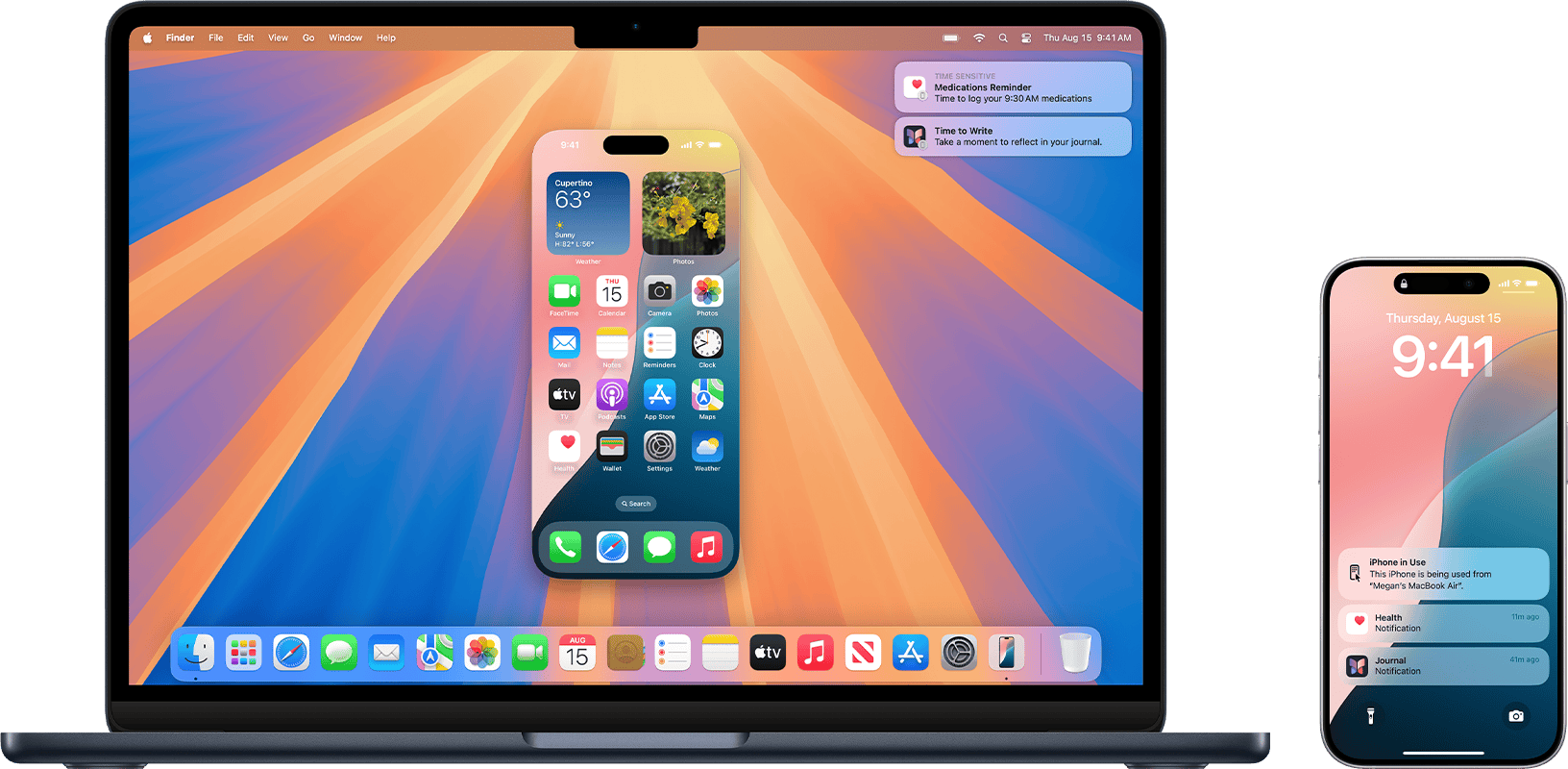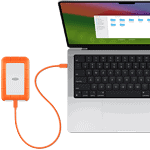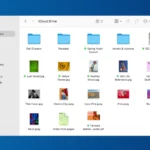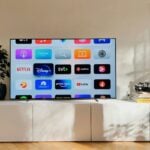Choosing the right operating system can feel like picking the right tool for a big job. Windows, macOS, ChromeOS, and Linux each have their own strengths that make them better for different types of users. The best operating system depends on your specific needs – Windows works well for most home users and gamers, macOS excels for creative professionals, Linux offers great customization for tech-savvy users, and ChromeOS is perfect for simple web-based tasks.
Your perfect OS match connects to how you use your computer every day. Windows 11 dominates the market with its wide software compatibility, while macOS has built a loyal following among designers and video editors. Linux distributions like Ubuntu give tech enthusiasts freedom to tinker, and ChromeOS provides a fast, lightweight option for basic computing needs.
Here’s the latest on the best operating system (OS) options in 2025, including what’s trending for desktops, laptops, and other devices:
🖥️ Best Operating Systems in 2025
1. Windows 11 (23H2 & upcoming 24H2 update)

- Why It’s Popular: Still the dominant OS for PCs, with wide software and hardware compatibility.
- Latest Features:
- Enhanced Copilot AI integration across File Explorer, Settings, and apps.
- Better support for Arm-based PCs and Snapdragon X Elite chips.
- Improved energy efficiency and performance tweaks.
- Ideal For: Gamers, productivity users, and general consumers.
2. macOS Sequoia (macOS 15)
- Release: Launching Fall 2025 (currently in public beta).
- Key Features:
- iPhone Mirroring – Control your iPhone directly from Mac.
- Safari Highlights – AI summaries of webpages.
- Window Tiling – Finally brings window snapping to macOS.
- Game Porting Toolkit 2 – Big win for Mac gaming.
- Ideal For: Creatives, Apple ecosystem users, developers.
3. ChromeOS (2025 update)
- Strengths:
- Super fast boot, long battery life, and tight Google integration.
- New Android app support and expanded Linux support.
- AI productivity tools are now more native to ChromeOS.
- Ideal For: Students, light users, cloud-centric workflows.
4. Ubuntu 24.04 LTS (“Noble Numbat”)
- Released: April 2024 – supported through 2029.
- New Additions:
- GNOME 46 desktop environment.
- Better ZFS file system support and power management.
- Seamless Snap/Flatpak updates and AI dev tools built-in.
- Ideal For: Developers, Linux enthusiasts, privacy-conscious users.
5. SteamOS 3.5 (and SteamOS 3.6 in testing)
- Use Case: Gaming PCs, especially handhelds like Steam Deck.
- Recent Enhancements:
- Improved Windows game compatibility with Proton.
- Deck-specific performance tuning.
- Ideal For: Dedicated gaming setups and couch gaming rigs.
🧠 AI-Focused Operating Systems & Hybrids
6. Microsoft Copilot+ PC OS Features
- These are AI-accelerated Windows 11 features exclusive to Copilot+ PCs:
- Recall (delayed launch over privacy concerns).
- AI-powered Studio Effects for video/audio.
- Real-time language translation and summarization.
7. Linux Distros with AI Focus
- Distros like Pop!_OS, Fedora AI Spin, and Deepin 23 are now bundling AI tools, dev frameworks, and GPU acceleration out of the box.
⚙️ Niche or Specialized OS Options
| OS | Best For |
|---|---|
| Tails | Privacy/anonymity with Tor |
| Zorin OS | Windows-like feel on Linux |
| Qubes OS | Security-centric setups |
| Fedora 40 | Developers bleeding edge tech |
| Android x86 / Bliss OS | Android on desktops |
Trends in 2025
- AI-Native OS Features: From Copilot to Apple Intelligence, OS-level AI is now table stakes.
- Arm Optimization: Apple Silicon, Snapdragon X Elite, and more are shifting the x86 vs. Arm balance.
- Cross-device Syncing: macOS/iOS integration, Windows Phone Link, and ChromeOS/Android syncing are front and center.
- Modular OSes: Like Fuchsia (still limited) and containerized Linux builds.
Key Takeaways
- The ideal operating system matches your specific needs and daily computer tasks.
- Windows offers broad software support and gaming capabilities while macOS provides a seamless experience for creative work.
- Free alternatives like Linux and ChromeOS can perform well on older hardware while offering different levels of customization.
History and Evolution of Operating Systems
The first operating systems were created in the 1950s. These early systems were simple and could only run one program at a time, which wasn’t very efficient.
In the 1960s, multiprogramming systems emerged. These allowed more than one program to run at once, making better use of computer resources.
UNIX was developed as a single-user version of an earlier system called MULTICS. UNIX became important because many modern systems are based on its ideas.
The 1970s and 1980s saw the rise of personal computers. Before this, most computers were large machines used by many people. Now individuals could have their own computers.
Microsoft created MS-DOS in the 1980s for IBM personal computers. This text-based system required users to type commands to make the computer work.
In the 1990s, graphical user interfaces became popular. Windows 3.1, Windows 95, and Mac OS made computers easier for regular people to use.
The 2000s brought more advanced systems like:
- Windows XP
- Mac OS X
- Linux distributions
Today’s operating systems focus on:
- Security
- Cloud integration
- Mobile device support
- User-friendly interfaces
The evolution of operating systems has been driven by advances in hardware and changing user needs. From simple program launchers to complex resource managers, they’ve grown to meet increasingly sophisticated demands.
Modern markets are dominated by a few major players. Windows, macOS, and Linux variants make up most of the desktop market, while iOS and Android dominate mobile devices.
Types of Operating Systems
Operating systems come in various forms to meet specific needs. They manage hardware, run applications, and provide user interfaces for different devices and purposes.
Desktop Operating Systems
Desktop operating systems power personal computers used at home and work. Windows remains the most widely used desktop OS, offering broad hardware compatibility and extensive software support. It comes in different versions like Windows 10 and Windows 11.
macOS is Apple’s operating system for Mac computers. It features a sleek design and tight integration with other Apple products. Many creative professionals prefer macOS for its stability and specialized software.
Linux distributions provide free and open-source alternatives. Ubuntu is a user-friendly Linux option with a growing software library. Other popular Linux versions include Fedora and Linux Mint.
Chrome OS runs on Chromebooks, focusing on web-based applications and Google services. It’s simple to use and works well on less powerful hardware.
Mobile Operating Systems
Mobile operating systems run smartphones and tablets. Android, developed by Google, powers most non-Apple mobile devices worldwide. It’s highly customizable and runs on devices from many manufacturers like Samsung, Google, and Xiaomi.
iOS is Apple’s mobile operating system for iPhones and iPads. It offers a consistent user experience, strong security features, and a curated app store. iOS and Android dominate the mobile market, with each having millions of available apps.
Both systems receive regular updates with new features and security improvements. They handle tasks like touch input, mobile data management, and battery optimization.
Some mobile operating systems also power smartwatches and other wearable devices. These versions are streamlined for smaller screens and different user needs.
Server Operating Systems
Server operating systems run equipment that provides services across networks. Linux distributions like Ubuntu Server, Red Hat Enterprise Linux, and CentOS are popular choices due to their stability, security, and low resource requirements.
Windows Server offers familiar tools for administrators already using Windows. It integrates well with other Microsoft products and services, making it common in business environments.
FreeBSD is a Unix-like operating system known for its reliability and performance. It powers many web servers and embedded systems.
Cloud platforms like Microsoft Azure and Amazon AWS use specialized server operating systems designed for virtualization and scalability. These systems manage resources across many physical machines.
Server operating systems include advanced features for:
- Remote access and management
- Network security and monitoring
- Database hosting
- Web services
- Virtualization of multiple systems
Popular Operating Systems Overview
The digital world uses several major operating systems that power our devices. Each system has unique features, benefits, and drawbacks that make it suitable for different users and purposes.
macOS
macOS is Apple’s desktop operating system known for its sleek design and tight integration with other Apple products. It runs exclusively on Mac computers, offering a user-friendly interface and strong security features.
macOS excels in creative tasks, making it a top choice for graphic designers, video editors, and musicians. Its built-in apps like Pages, Numbers, and Keynote provide solid productivity tools right out of the box.
The system receives yearly free updates, typically named after California landmarks. Recent versions include Big Sur, Monterey, and Ventura.
Mac users enjoy the benefit of the App Store, which provides vetted applications. The system also works seamlessly with iPhones and iPads through features like Handoff and Universal Clipboard.
Microsoft Windows
Windows remains the most widely used desktop operating system globally, with Windows 10 having the largest market share. It runs on computers from many manufacturers, giving users extensive hardware choices at various price points.
Windows offers unmatched software compatibility, making it ideal for gaming and business applications. Many programs are designed specifically for Windows and may not work on other systems.
Microsoft has shifted to a service model with Windows 10 and 11, providing regular feature updates instead of entirely new versions every few years.
Key Windows features include:
- Start menu for quick program access
- Microsoft Store for applications
- Xbox Game Bar for gamers
- Microsoft 365 integration
- Windows Defender security
Windows supports touchscreens and 2-in-1 devices, offering flexibility for different user needs.
Linux Distributions
Linux is an open-source system that comes in many versions called distributions or “distros.” Popular choices include Ubuntu, Debian, Linux Mint, and CentOS. Unlike Windows and macOS, most Linux distros are free.
Ubuntu stands out as the most user-friendly Linux distribution, making it a good starting point for beginners. It offers a clean interface and large software repository.
Linux excels in:
- Server environments
- Programming and development
- Reviving older hardware
- Security and privacy
- Customization
Most Linux systems use package managers for easy software installation. The terminal gives users powerful control over their system, though graphical interfaces have improved greatly.
Linux runs on almost any hardware, from tiny computers like Raspberry Pi to supercomputers.
Android
Android OS is Google’s mobile operating system powering most smartphones worldwide. Based on Linux, it’s open-source at its core but includes proprietary Google services.
Android offers extensive customization options. Users can change launchers, keyboards, and default apps to create a personalized experience. The system supports widgets for at-a-glance information on home screens.
The Google Play Store provides millions of apps, games, books, and movies. Alternative app stores exist for those wanting options outside Google’s ecosystem.
Android runs on devices at all price points, from budget phones under $100 to premium flagships costing over $1,000. This accessibility has helped it achieve massive global market share.
Manufacturers often add their own interfaces on top of Android, like Samsung’s One UI or Xiaomi’s MIUI, creating varied user experiences.
Apple iOS
iOS is Apple’s mobile operating system that runs exclusively on iPhones. Known for its simplicity and security, iOS provides a consistent experience across all devices.
The App Store offers a curated selection of high-quality apps that must meet Apple’s strict guidelines. This approach reduces malware risks but limits customization compared to Android.
iOS devices receive updates for many years, with even older models getting the latest security patches. This longevity makes iPhones a good long-term investment.
Apple’s ecosystem integration shines with iOS. Features like AirDrop, iMessage, and FaceTime work seamlessly between iPhones, iPads, and Macs.
Privacy is a major focus, with features that limit tracking and give users control over their data. Apps must request permission to access photos, location, and other sensitive information.
Other Operating Systems
Beyond the major players, several specialized operating systems serve specific needs. Chrome OS powers Chromebooks with a lightweight, web-focused experience. It’s popular in education settings for its simplicity and security.
Some legacy systems like Windows XP still run on specialized equipment despite no longer receiving security updates. These outdated systems pose security risks but sometimes remain necessary for compatibility with older software.
Unix-based systems power many servers and specialized computing environments. They share similarities with Linux but have different development histories.
Gaming consoles use custom operating systems optimized for performance and ease of use. PlayStation, Xbox, and Nintendo Switch each run proprietary systems designed specifically for gaming.
Smart TVs, smartwatches, and other IoT devices often use lightweight custom operating systems built for specific hardware limitations and use cases.
Comparing Operating System Performance
Performance differences between operating systems can significantly impact your daily computing experience. The right choice depends on what you value most in your digital workflow.
Speed and Efficiency
Windows generally requires more system resources to run smoothly compared to alternatives. Many users report that Linux distributions are 70% faster than Windows for certain tasks like building software. This speed difference becomes obvious on older hardware where Linux can breathe new life into machines that struggle with Windows.
macOS offers excellent speed on Apple hardware due to tight integration between software and hardware components. This optimization results in fast boot times and smooth operation even under heavy loads.
ChromeOS stands out for its lightweight design and quick startup. It’s built for speed with minimal background processes, making it perfect for basic computing needs.
Boot time comparison:
- ChromeOS: 7-10 seconds
- Linux: 15-30 seconds
- macOS: 20-45 seconds
- Windows: 30-60 seconds
System Stability
Linux systems are known for their rock-solid stability. Many Linux servers run for years without needing a restart, showing the platform’s reliability for critical tasks.
Windows has improved stability in recent versions, but still faces occasional crashes. The Windows registry can become corrupted over time, leading to system slowdowns or failures.
macOS offers excellent stability due to its Unix foundation and closed ecosystem. Apple’s control over both hardware and software helps prevent many common issues.
ChromeOS rarely crashes because of its simplified architecture and limited functionality. Its web-based approach means fewer things can go wrong compared to traditional operating systems.
Resource Management
Linux manages RAM more efficiently than Windows. It can run smoothly with less memory, making it ideal for servers and older computers. Linux also uses disk space more efficiently with smaller installation sizes.
Windows tends to use more RAM and CPU resources for background processes. Recent versions have improved, but still need more powerful hardware to run well.
macOS balances resource usage effectively but requires Apple hardware. Its memory management is efficient but less flexible than Linux.
ChromeOS has the lightest footprint of all major operating systems. It needs minimal resources because most applications run in the browser and store data in the cloud.
Memory usage comparison (idle):
- ChromeOS: 300-500MB
- Linux: 500-800MB
- macOS: 1-2GB
- Windows: 1.5-2.5GB
Security Features
Security is a critical factor when choosing an operating system. Modern operating systems offer various protective measures to keep user data safe and prevent unauthorized access.
Malware Protection
Different operating systems handle malware threats in unique ways. Windows includes Windows Defender, which provides real-time protection against viruses, spyware, and other harmful programs. This built-in solution has improved significantly in recent years, earning high marks in independent tests.
Mac’s approach focuses on prevention with features like Gatekeeper, which checks apps for known malicious content before allowing installation. The system also uses sandboxing to limit what installed applications can do.
Linux systems benefit from a smaller target profile for malware creators. Ubuntu and other distributions use application repositories that screen software for threats. For advanced security, Qubes OS uses virtualization to isolate tasks in separate containers, limiting potential damage if one area becomes compromised.
ChromeOS takes a minimal approach with its verified boot process that checks for system tampering at startup.
User Authentication
Strong authentication methods form the backbone of operating system security. Most systems now offer multiple options:
Windows provides:
- Windows Hello (facial recognition, fingerprint)
- PIN codes
- Traditional passwords
- Two-factor authentication options
MacOS includes:
- Touch ID fingerprint scanning
- Apple Watch unlock
- FileVault for disk encryption
- iCloud keychain for password management
Linux distributions support various authentication mechanisms including PAM (Pluggable Authentication Modules), which allows for flexible security policies. Many distros now include biometric options through third-party software.
ChromeOS ties authentication to Google accounts with optional 2FA, making device recovery simpler but potentially creating a single point of failure.
Security Updates
Timely security patches are essential for maintaining system security. Windows delivers updates monthly (Patch Tuesday) with critical fixes released as needed. The automatic update system ensures most users stay protected.
Apple typically provides security updates for macOS for about 3 years after release. They deliver fixes quickly for critical vulnerabilities, though users must approve installations.
Linux update methods vary by distribution. Ubuntu offers Long-Term Support (LTS) versions with 5 years of security updates. Fedora prioritizes newer technology but with shorter support cycles.
Windows implements Secure Boot and BitLocker to protect system integrity and data. These features prevent tampering with boot files and encrypt stored information.
ChromeOS automatically updates in the background, requiring minimal user intervention. This approach keeps devices secure but offers limited control over the update process.
User Experience
The operating system you choose greatly affects how you interact with your computer daily. A good OS should be easy to navigate, accessible to all users, and allow for personal touches that match your needs.
User Interface
Windows offers a familiar interface with its Start menu and taskbar that most users recognize instantly. The interface is designed for easy navigation, making it good for beginners and experienced users alike.
MacOS provides a clean, polished look with its dock and menu bar. Apple focuses on making things simple and elegant. Many creative professionals prefer MacOS because tools and features are easy to find and use.
ChromeOS has the simplest interface of all major systems. It’s basically just a browser with some added features. This makes it perfect for people who mainly use web apps.
Linux varies widely depending on which “flavor” (distribution) you choose. Ubuntu offers a user-friendly experience while others like Arch Linux require more technical knowledge. Linux is popular with programmers who want complete control.
Accessibility Options
Windows excels in accessibility with features like Narrator screen reader, magnifier, high contrast themes, and voice recognition. Microsoft has invested heavily in making computers usable for everyone.
MacOS includes VoiceOver, a powerful screen reader that helps visually impaired users. It also offers features like zoom, display accommodations, and dictation that make the system more accessible.
Both major systems allow for keyboard shortcuts that help users with mobility issues. They also support various input devices designed for people with special needs.
ChromeOS offers basic accessibility features but isn’t as robust as Windows or MacOS. Linux accessibility depends on the distribution, with some offering better support than others.
Customization
Windows allows for moderate customization including changing backgrounds, colors, themes, and arranging the Start menu. Windows 11 introduced more flexible widget options and desktop personalization.
Linux offers the most customization by far. Users can change almost everything about how their system looks and works. This is why many tech enthusiasts prefer Linux for personal use. You can pick your desktop environment, modify code, and tailor everything to your exact preferences.
MacOS is the most restricted in terms of customization. Apple maintains tight control over how their system looks and works. Users can change backgrounds and organize their dock, but deeper modifications are limited.
ChromeOS offers minimal customization options since it focuses on simplicity and cloud-based applications. Users can change wallpapers and arrange apps, but not much beyond that.
Hardware Compatibility and Drivers
When choosing an operating system, hardware compatibility can make or break your experience. Windows offers superior hardware compatibility compared to other systems, supporting almost all devices right out of the box.
Linux has improved greatly but still requires more technical knowledge for hardware setup. Many manufacturers prioritize Windows driver development due to its large market share.
Popular Device Compatibility:
- Dell computers: Excellent Windows support, good Linux compatibility
- Samsung phones/tablets: Best with Windows, limited Linux support
- LG monitors: Universal compatibility, but advanced features often Windows-only
- MacBook Pro: Runs macOS natively, can dual-boot Windows
Apple devices like the iPad work in their own ecosystem with macOS but have limited cross-platform compatibility. Most iPads connect easily to Macs but need extra software for Windows integration.
Chromebooks offer a simpler approach with ChromeOS. They have good hardware compatibility but with fewer options for external devices compared to Windows machines.
A quick comparison of driver availability:
| Operating System | Pre-installed Drivers | Driver Updates | Hardware Range |
|---|---|---|---|
| Windows 11 | Extensive | Automatic | Very Wide |
| macOS | Limited to Apple | Automatic | Narrow |
| Linux | Growing | Manual/Auto | Wide |
| ChromeOS | Basic | Automatic | Limited |
For gamers and professionals using specialized equipment, Windows remains the top choice. The built-in driver management makes connecting new devices much easier for beginners.
Software and Application Ecosystem
The software ecosystem is a crucial factor when choosing an operating system. Different platforms offer varying app selections, update processes, and support for developers, which directly impacts the user experience.
Availability of Applications
Windows leads the pack with the largest software library among major operating systems. Most commercial software is built for Windows first, giving it an edge for business users and gamers alike.
MacOS offers a more curated app selection with high-quality options, especially for creative professionals. The App Store provides vetted applications, though the total number is smaller than Windows.
Linux distributions like Ubuntu have grown their app libraries significantly. Many open-source alternatives exist for popular software, and compatibility layers like Wine let users run some Windows programs.
ChromeOS relies mainly on web apps and Android applications, making it perfect for users who work primarily online but limiting for those needing specialized desktop software.
Software Updates
Windows updates come regularly but can sometimes disrupt workflow. Microsoft has improved this process in Windows 11, allowing more control over when updates install.
MacOS delivers smoother update experiences with less disruption. Apple’s tight hardware-software integration means fewer compatibility issues after updates.
Linux distributions offer flexible update schedules. Ubuntu, for example, provides both long-term support versions and more frequent releases to suit different needs.
ChromeOS updates automatically in the background with minimal user input needed. This approach keeps systems secure but offers less user control over the process.
Developer Support
Windows provides robust development tools like Visual Studio and extensive documentation. It supports multiple programming languages and frameworks, making it a versatile platform for developers.
MacOS is favored by many developers for its Unix-based architecture and excellent terminal. It’s particularly strong for creative and artistic workflows.
Linux is often considered the best environment for programmers, offering powerful command-line tools and flexibility. Ubuntu and other distributions provide extensive development libraries and tools free of charge.
ChromeOS has limited native development capabilities but works well for web development through browser-based tools and Linux container support added in recent versions.
Support and Maintenance
Getting help when you need it is a crucial factor when choosing an operating system. The quality and availability of support services can make a big difference in your experience, especially when facing technical problems.
Technical Support
Windows offers the most comprehensive official support options among major operating systems. Microsoft provides several support channels including phone, chat, and email. These services come with different response times based on your support plan.
For business users, Windows prioritizes enterprise support with dedicated account managers. This is particularly valuable for companies that need quick solutions to minimize downtime.
MacOS users benefit from Apple’s renowned customer service through Apple Stores and the AppleCare program. This hands-on approach allows users to get in-person help, which many find reassuring.
Linux distributions vary in support quality. Commercial versions like Red Hat Enterprise Linux offer professional support packages with service level agreements. Ubuntu, a popular free option, provides community support and paid enterprise options for businesses.
Community Forums
Windows has extensive user communities across multiple platforms. The official Microsoft forums host thousands of users who share solutions and workarounds.
Third-party Windows forums like Reddit’s r/Windows and Windows Central attract both novices and experts. Many problems can be solved by searching these resources before contacting official support.
Linux boasts the most active and passionate community forums. Users pride themselves on helping others, with platforms like Ask Ubuntu and the Arch Linux forums providing detailed technical advice.
MacOS has smaller but equally dedicated community forums. Sites like MacRumors and Apple’s own discussion boards feature knowledgeable users who frequently offer solutions before official fixes are available.
Official Documentation
Linux distributions excel in documentation quality. The Arch Wiki stands out as perhaps the most comprehensive operating system documentation available, covering virtually every aspect of the system.
Ubuntu’s documentation is user-friendly and well-organized, making it accessible even to beginners. This contributes to Ubuntu being considered one of the most approachable Linux options.
Windows offers extensive documentation through Microsoft Learn and the Windows Help system. The documentation covers everything from basic operations to advanced system administration.
For developers, Microsoft provides detailed API documentation that aids in creating Windows applications. This technical depth helps explain Windows’ dominance in many business environments.
MacOS documentation tends to focus on simplicity and user experience rather than technical depth. Apple’s guides use clear language and visual aids to help users accomplish tasks quickly.
Choosing an Operating System
Selecting the right operating system affects your daily computing experience, productivity, and satisfaction with your device. The best choice depends on your specific needs, technical skills, and the tasks you plan to perform.
For Personal Use
When choosing an operating system for personal use, ease of use should be a top priority. Windows 11 remains the most versatile option for everyday users, with a familiar interface and wide software compatibility.
macOS shines for those in creative fields. It offers a smooth, intuitive experience with excellent built-in apps for photo and video editing. Apple devices are known for their impressive battery life and overall durability.
ChromeOS is perfect for users with simple needs like web browsing, email, and document editing. It’s an easy-to-use operating system that boots quickly and requires minimal maintenance. It works well on lower-cost hardware and provides good security with automatic updates.
Consider these practical questions:
- What software do you need to run?
- How important is gaming performance?
- Do you prefer touchscreens or traditional interfaces?
- What’s your budget for both hardware and software?
For Business Use
Business environments require reliable, secure operating systems with good support options. Windows dominates the business world due to its extensive software compatibility and familiar interface that minimizes training needs.
macOS offers excellent security features and stability for businesses focused on design, marketing, or media production. The higher upfront cost is often balanced by lower IT maintenance needs and longer device lifespan.
For cost-sensitive businesses, Linux distributions like Ubuntu provide free alternatives with good durability and performance on older hardware. Chrome Enterprise offers simple management for organizations primarily using cloud services.
Important business considerations include:
- Compatibility with industry-specific software
- Security features and update policies
- Remote management capabilities
- Total cost of ownership (not just initial purchase)
- Integration with existing systems
For Developers
Developers have unique needs that influence operating system choice. Linux distributions give programmers complete control and customization options. They offer powerful command-line tools and are ideal for web development, system administration, and open-source work.
macOS provides a Unix-based system with excellent dev tools while maintaining good software compatibility. Many developers prefer it for iOS/macOS app creation and web development. The terminal experience is solid, and the hardware offers reliable battery life for coding on the go.
Windows has improved its developer experience significantly with WSL (Windows Subsystem for Linux) and better terminal tools. It remains essential for .NET development and offers good hardware options at various price points.
Consider these developer-specific factors:
- Programming languages and frameworks you’ll use
- Local development vs. cloud development needs
- Docker and virtualization requirements
- Hardware preferences (touchscreens, multiple monitors)
Installation and Setup
Installing a new operating system doesn’t have to be difficult. Each major OS offers different setup experiences, with some being more user-friendly than others.
Windows installation is straightforward for most users. You’ll need to create a bootable USB drive using the Media Creation Tool, restart your computer, and follow the on-screen instructions. The process typically takes 30-45 minutes.
macOS has the simplest installation process. If you’re using a Mac, you can download the latest version from the App Store and follow the guided installation. Apple keeps this process clean and simple.
For those interested in Linux, distributions like Ubuntu offer user-friendly installations that have become much easier over the years. The installer walks you through each step with clear options.
ChromeOS comes pre-installed on Chromebooks, making it the easiest option for those who don’t want to handle installation at all.
Things to consider before installation:
- Backup all important files
- Check system requirements
- Free up at least 20GB of disk space
- Have a stable internet connection
First-time setup varies by system. Windows and macOS ask many questions about privacy settings and accounts. Linux systems often ask fewer questions but may require more technical decisions about partitioning.
Many Linux options like Manjaro and Ubuntu are known for being well-supported and user-friendly during setup, while specialized systems like Qubes OS might require more technical knowledge.
The right choice depends on your comfort level with technology and your specific needs.
Cost Considerations and Licensing
When choosing an operating system, the price tag matters. Each system comes with different costs and licensing models that can affect your budget.
Windows operating systems require you to purchase a license. Windows licenses for home users typically range from $139-$199, depending on the version you select. Windows Server licensing costs are much higher, with Windows Server Standard 2022 priced around $1069.
Linux distributions are mostly free and open-source. Users can download and install them without paying license fees. This makes Linux a budget-friendly choice for many.
macOS comes pre-installed on Apple computers. The cost is built into the hardware price, so there’s no separate purchase needed.
Different licensing models affect long-term costs:
| OS Type | Initial Cost | Upgrade Cost | License Type |
|---|---|---|---|
| Windows | $139-$199 | Varies | Per device |
| Linux | Free | Free | Open source |
| macOS | Included with Mac | Free updates | Tied to hardware |
For businesses, Windows licensing can include Software Assurance, adding roughly 50% to the purchase price but providing upgrade rights.
Computers with pre-installed Windows often add about $79 to the machine’s price, which is cheaper than buying Windows separately.
Hidden costs also exist. These include learning curves, software compatibility, and support needs that vary across operating systems.
Frequently Asked Questions
Choosing an operating system affects everything from gaming and programming to security and user experience. These common questions address the key factors to consider when selecting the right OS for your specific needs.
What are the optimal operating systems for gaming performance?
Windows remains the top choice for gaming enthusiasts. Most games are developed with Windows compatibility in mind, and DirectX support gives it an edge over competitors.
For serious gamers, Windows 10 and 11 offer the best hardware compatibility and the largest game library. Steam’s vast collection works best on Windows systems.
Mac has improved its gaming capabilities, but still lags behind Windows in terms of game selection and performance. Linux gaming has grown through Steam’s Proton compatibility layer, but requires more technical knowledge to optimize.
What operating system is recommended for software development and programming?
The best OS for development depends on your target platform and programming languages. Many developers prefer Linux for its customization options and powerful command-line tools.
macOS is excellent for those developing Apple products or working with Unix-based systems. The Unix foundation makes it ideal for web development and programming.
Windows has become more developer-friendly with Windows Subsystem for Linux (WSL) and improved terminal options. It’s essential for developing Windows-specific applications.
Cross-platform tools like VS Code work well across all major operating systems, making the choice more about personal preference and workflow.
Which operating system offers the best security features?
macOS is often considered the most secure mainstream operating system. Apple’s closed ecosystem and strict app review process help prevent malware distribution.
Linux distributions like Ubuntu and Fedora offer strong security through regular updates and limited user privileges. The open-source nature allows security experts to identify and fix vulnerabilities quickly.
Windows has improved security significantly with features like Windows Defender, secure boot, and BitLocker encryption. However, its market dominance makes it the primary target for malware creators.
Chrome OS provides excellent security through sandboxing applications and automatic updates. It’s ideal for users who primarily need web-based applications.
How do mainstream operating systems compare in terms of speed and efficiency?
Linux typically offers the best performance on equivalent hardware. Its lightweight design and minimal resource requirements make it ideal for older computers.
macOS is optimized for Apple hardware, resulting in excellent performance on Macs. The tight integration between software and hardware creates an efficient system.
Windows tends to require more system resources but performs well on modern hardware. Performance can vary widely depending on the specific Windows version and hardware configuration.
Chrome OS is designed for speed and simplicity, making it very efficient for web browsing and basic tasks. It boots quickly and runs smoothly on modest hardware.
What is the most user-friendly operating system for personal computers?
macOS is renowned for its intuitive interface and seamless experience. Apple’s focus on design and user experience makes it approachable for beginners.
Windows provides familiarity for most users, as it’s the most widely used desktop OS. Windows 11 offers a clean interface with features that most users find easy to navigate.
Chrome OS offers extreme simplicity for those who mainly use web applications. Its straightforward approach makes it perfect for non-technical users.
Linux has become more user-friendly with distributions like Ubuntu and Mint, but still requires more technical knowledge than commercial alternatives.
Which mobile operating system provides the best user experience and application support?
iOS offers a polished, consistent experience across Apple devices. The App Store features high-quality applications that follow strict design guidelines.
Android provides more customization options and works on devices at various price points. The Google Play Store offers a wider variety of apps, though quality can vary.
Both systems now offer excellent privacy controls, though iOS tends to be more restrictive by default. Android gives users more freedom to customize their experience.
App developers typically release products for both platforms, but iOS often gets new apps and updates first due to its lucrative user base and simpler development environment.







